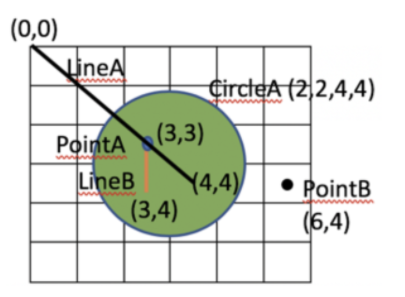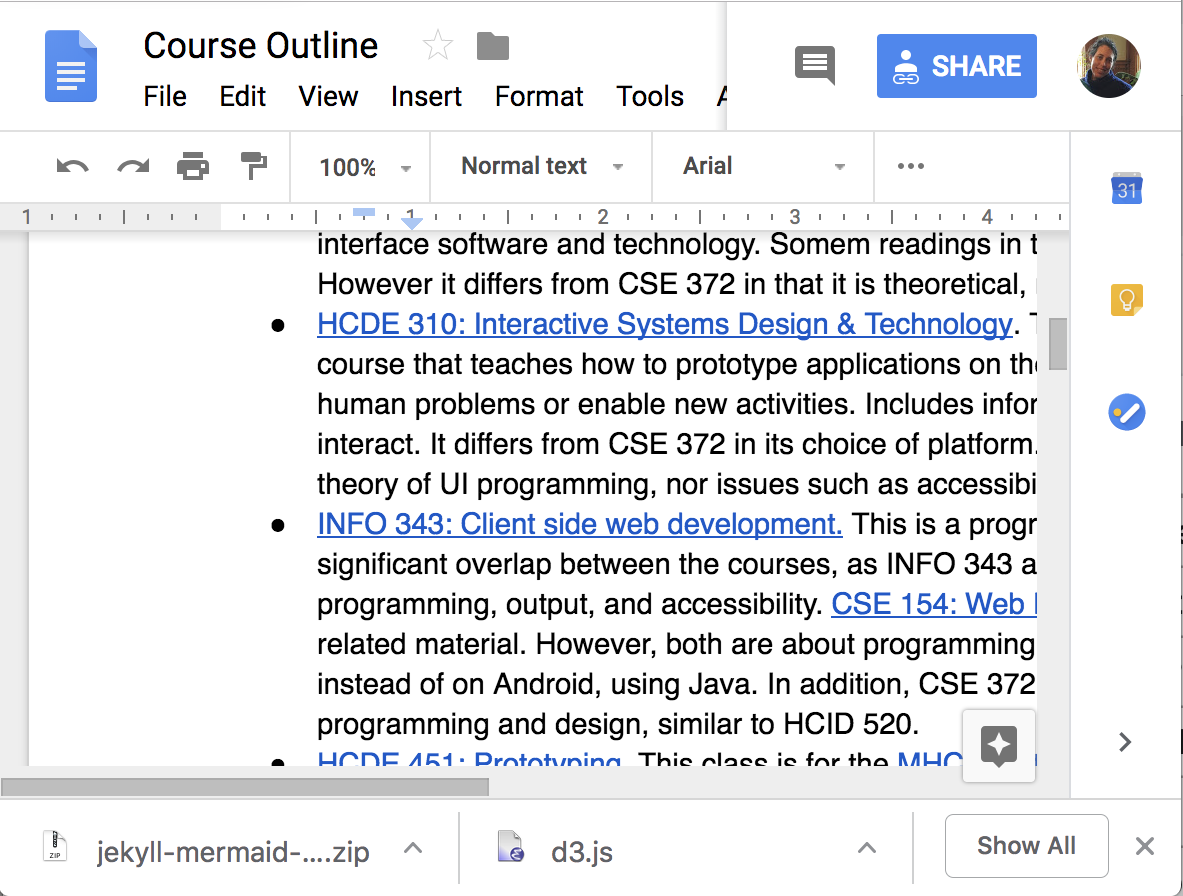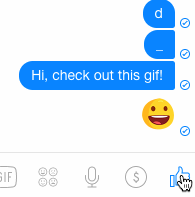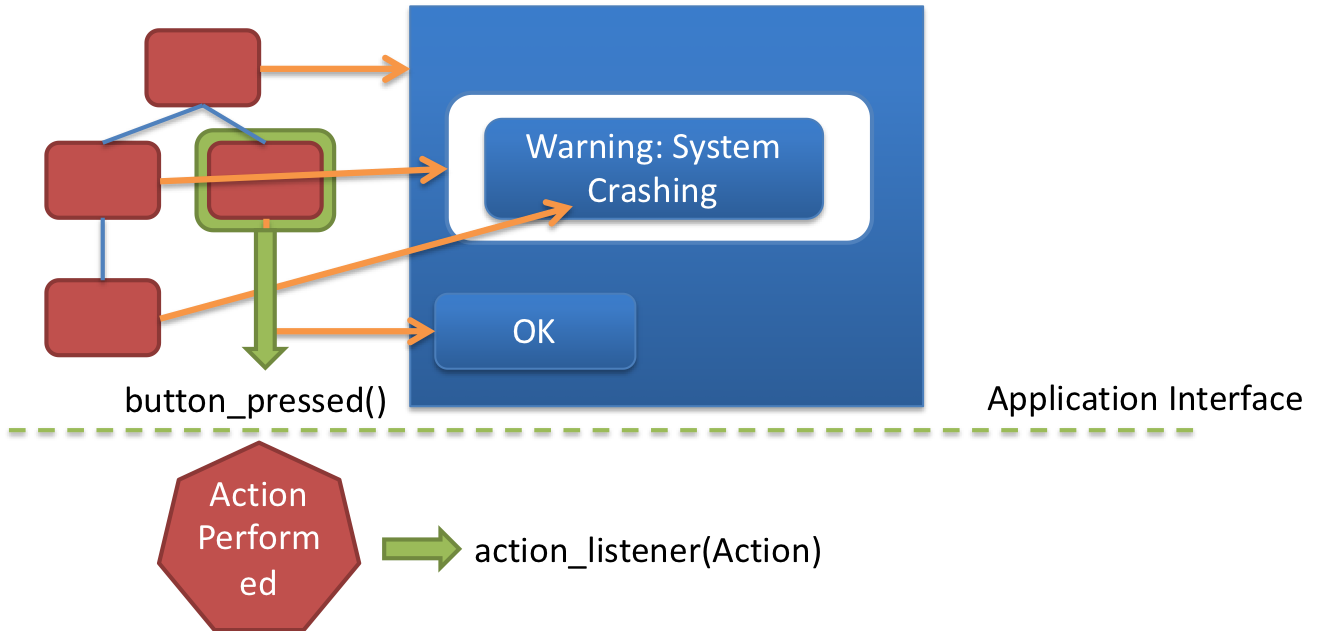name: inverse layout: true class: center, middle, inverse --- # The Whole Toolkit Lauren Bricker CSE 340 Spring 2021 --- layout:false [//]: # (Outline Slide) # Today's goals - Practice Quiz Reviews - All added to the [schedule](/courses/cse340/21sp/schedule.html) - [Practice Quiz 3](/courses/cse340/21sp/slides/wk04/wk4review.html) - [Practice Quiz 4](/courses/cse340/21sp/slides/wk05/wk5review.html) - [Practice Quiz 5](wk6review.html) - Recount how we get input from the user (part 1) and produce output for the user (part 2) Administrivia - ColorPicker Midpoint (video) Due Thursday 10pm --- # Meta notes - Remember: this class is about Interaction Programming. Programming Android is the substrate for the discussion. - We try to explicitly state when are discussing theory vs practice. - Subgoal of this class: a transition or bridge to 300 level courses. - Important that you learn how to read less structured specifications - Important that you learn how to search for __usable__ information - Is StackOverflow friend or foe? (Reaction: Yes for friend, no for foe) --- # What is EPA? EPA stands for the "effort, participation and altruism" grade. - Effort: What you put into the class - Participation: Whether you actively engage with the material - Altruism How you help others -- count: false To assess EPA we will be looking at: - Timely engagement with lecture and section material (Polls, Ed lesson completion, chatbombs) - Good faith effort on the practice quizzes - Participating in our discussion board: - asking and responding to questions - viewing prior posts - Attending OH You don't have to do ALL of these but you have to do most of them. --- # The Whole Toolkit Architecture .left-column50[ - Input - (C/M?) Input models (events) - (C/M?) Event dispatch - (C/M?) handling (state machine) - (C/M?) Callbacks to application - Output - (V) Interactor Hierarchy design & use - (V)Drawing models (`onDraw()`) - (V)Layout (`onLayout()` or `XML`) - (V) Damage and redraw process ] .right-column50[ - End User - Input: The user does actions with the mouse, keyboard and other peripherals. - Output: Changes views on the screen, to audio, etc. - App Developer - Input: writes callbacks - Output: may call `invalidate()` - Component Developer - Input: needs to understand all of what we've talked about - Output: helpful to know all of what we've talked about. ] --- # The Whole Toolkit Architecture - Input - **Input models (events)** - Event dispatch - Event handling (state machine) - Callbacks to application - Output - Interactor Hierarchy design & use - Drawing models (`onDraw()`) - Layout (`onLayout()` or `XML`) - Damage and redraw process - Storage - Bundles - Shared Preferences --- # Events (Review) Which of the following does NOT generate an event? (Chat bomb) A. Pressing the CTRL key <br> B. Pressing the A key <br> C. Moving your finger on the phone screen <br> D. Clicking a mouse button (on a computer) -- CTRL does not generate an event (it is a modifier) Everything else does --- layout:false # The Whole Toolkit Architecture - Input - Input models (events) - **Event dispatch** - Event handling (state machine) - Callbacks to application - Output - Interactor Hierarchy design & use - Drawing models (`onDraw()`) - Layout (`onLayout()` or `XML`) - Damage and redraw process - Storage - Bundles - Shared Preferences --- # Event Dispatch: Picking .left-column40[ <div class="mermaid"> graph TD A[0: Drawing Canvas] --> B(1: CircleA, Green) A --> C(2: LineB, Orange) B --> D(3: LineA, Black) C --> E(4: PointA, Blue) C --> F(5: PointB, Black) </div>  ] .right-column60[ An interactor hierarchy and the corresponding interface are shown to the left. If the user clicks on the image at (4,4) what will be the order of views in the filtered pick list? Assume that the drawing canvas does not accept touch input. ] ??? - 3: LineA (Black) - 1: CircleA (Green) Nothing else is positionally associated --- # Event Dispatch: Picking .left-column40[ <div class="mermaid"> graph TD A[0: Drawing Canvas] --> B(1: CircleA, Green) A --> C(2: LineB, Orange) B --> D(3: LineA, Black) C --> E(4: PointA, Blue) C --> F(5: PointB, Black) </div>  ] .right-column60[ An interactor hierarchy and the corresponding interface are shown to the left. If the user clicks on the image at (4,4) what will be the order of views in the filtered pick list? Assume that the drawing canvas does not accept touch input. - 3: LineA (Black) - 1: CircleA (Green) Nothing else is positionally associated ] --- # Event Dispatch: Delivering Review - Top-down, Bottom-Up, Bubble-out, Focused-based: these are theoretical Event dispatch approaches. - *Capture* is rarely used by component developers - Capture is top-down: start on the in the biggest interactor that contains the event, then narrow in on which window actually will use the event - *Bubbling* is far more common - Bubbling is bottom-up - start with the window at the front (the last drawn, lowest in the interactor tree) - see if the event is consumed by that interactor. If not, go up the tree. - Android does it a bit differently. - Hacky version of capture before picking - Most stuff is in bubble order, but some callbacks assume you consume the event (no option to return `true` vs `false`) --- # Event Dispatch: Bubble .left-column40[  ] .right-column60[ For the same image, what interactor will get the event first in Bubble? ] -- .right-column60[ Why LineA, Black? ] -- .right-column60[ It is the last thing (under the locator event) drawn (reflected in its position in the interactor hierarchy) ] --- # Focus versus Positional dispatch In which of the following situations is focus dispatch used during event handling, and in which is positional dispatch used? - When a key is typed? - When a button is clicked? - When a user swipes on the screen? - When doing rubberbanding of a line (click, drag, release) --- layout:false # The Whole Toolkit Architecture - Input - Input models (events) - Event dispatch - **Event handling (state machine)** - Callbacks to application - Output - Interactor Hierarchy design & use - Drawing models (`onDraw()`) - Layout (`onLayout()` or `XML`) - Damage and redraw process - Storage - Bundles - Shared Preferences --- # Essential Geometry represents places .left-column-half[  ] .right-column-half[ - Example: The essence (or nature) of this scrollbar/where can you interact with it is: - on the thumb - inside the scrollbar above the thumb - inside the scrollbar below the thumb ] --- # PPS uses Essential Geometry .left-column40[ Button <div class="mermaid"> stateDiagram-v2 [*] --> INSIDE: DOWN / indentButton() INSIDE --> OUTSIDE: MOVE / <BR> Outside ? normalButton() OUTSIDE --> [*]: UP / cancelAction() INSIDE --> [*]: UP / invokeAction() OUTSIDE --> INSIDE: MOVE / <BR> Inside ? indentButton() </div> ] .right-column60[ Scrollbar <div class="mermaid"> stateDiagram-v2 [*] --> Scrolling: MouseDown / Inside [*] --> Ready: MouseMove / Inside Ready --> [*]: MouseClick / <BR> AboveThumb?<BR>Scrollup() Ready --> [*]: MouseClick / <BR> BelowThumb?<BR>Scrolldown() Ready --> [*]: MouseMove / <BR> Outside Scrolling --> Scrolling: MouseMove / <BR> UpdateThumbDocument() Scrolling --> [*]: MouseUp / <BR> KeepLocation() </div> ] Then from the PPS you can generate the code for this interactor. --- # Like Button Example .left-column[ <br>  ] .right-column[ - Determine the Events (triggers) - Determine the States - Determine the Queries (essential geometry, context) - Determine the Actions ] ??? What constitutes an “event” varies - may be just low level events, or - higher level (synthesized) events - e.g. region-enter, press-inside What is missing? Query fields --- # Like Button Example .left-column[ <br>  ] .right-column[ - Determine the Events (triggers) - MouseDown, MouseUp, MouseMove - Determine the States - PRESS/NOT_PRESSED - Determine the Queries (essential geometry, context) - INSIDE/OUTSIDE - Determine the Actions - highlight()/unhighlight(), startAnimation(), updateAnimation(), finishAnimation(), addToChat() ] --- # Like Button Example .left-column[ <br>  ] .right-column[ <div class="mermaid"> stateDiagram-v2 [*] -->PRESSED: MouseDown/INSIDE? highlight(),startAnimation() PRESSED --> PRESSED: updateAnimation() PRESSED --> PRESSED: finishAnimation(), !small PRESSED --> [*]: MouseUp/INSIDE/small? unhighlight() PRESSED --> [*]: MouseUp,INSIDE/!small,addToChat(),unhighlight() </div> Note : This does not include the states if the mouse moves off the button while still the user still has the mouse button pressed. ] --- # Reminders: - PPSs are good for helping you to design your interactions/interactors - PPSs are a good way to do control flow in event driven systems - You can use PPSs to do (formal or informal) analysis - are all possible inputs (e.g. errors) handled from each state - what are next legal inputs: can use to enable / disable - PPSs can be automated based on higher level specification --- layout:false # The Whole Toolkit Architecture - Input - Input models (events) - Event dispatch - Event handling (state machine) - **Callbacks to application** - Output - Interactor Hierarchy design & use - Drawing models (`onDraw()`) - Layout (`onLayout()` or `XML`) - Damage and redraw process - Storage - Bundles - Shared Preferences --- # Callbacks in Android - At the time Android was created the toolkit developers have *no* idea how every app may want to respond to events - Listeners are an interface that acts as a _callback_ method - Recall interfaces specify behavior (but no data) that can be inherited. - Must be *registered with* a particular `View` - The toolkit architecture (implemented in `View`) then delivers events that arrive at *that View* to *those listeners* - i.e. once the `View` is interacted with by the user - A `View` can have listen for different types of interactions --- # Standard Listener Interfaces The toolkit has pre-defined interfaces so apps or components can respond to events such as clicks or touches. ```java // User tapped a view public static interface View.OnClickListener { ... } // User long pressed on a View public static interface View.OnLongClickListener { ... } // State of view has changed // (e.g. user clicked outside a EditText input box) public static interface View.OnFocusChangeListener { ... } // user typed something public static interface View.OnKeyListener { ... } ``` --- # Different types of callbacks .left-column40[  ] .right-column60[ Some callbacks are - registered with the system (`onCreate`, `onResume`, ...) - triggered by a timer. - triggered by our Measure (onMeasure), Layout (onLayout), Invalidate (onDraw) And ... - created by the Component Developer! (i.e. onColorSelected) ] --- # Review: Model View Controller (MVC) .left-column60[ <div class="mermaid"> sequenceDiagram loop Every time user provides input Note right of View: User provides input View->>Controller: Input Controller->>Model: Change state Model->>Controller: Update state of View(s) Controller->>View: Triggers redraw Note right of View: User sees response end </div> ] .right-column40[ **Goal:** separation of the view from the underlying model (data) ] --- # Custom Callback Example (ColorPicker) .left-column60[ <div class="mermaid"> sequenceDiagram participant Application participant AbstractColorPickerView participant User Application->>AbstractColorPickerView: addColorChangeListener(this) User->>AbstractColorPickerView: Interacts with color picker AbstractColorPickerView-->>Application: onColorSelected() </div> ] .right-column40[ <div class="mermaid"> classDiagram class ColorChangeListener { } class AbstractColorPickerView{ #mColorChangeListeners +addColorChangeListener() +removeColorChangeListener() +invokeColorChangeListeners() } class Application { onColorSelected() } ColorChangeListener <|-- Application : Implements AbstractColorPickerView --> "many" ColorChangeListener : Contains </div> ] --- # End of Part I